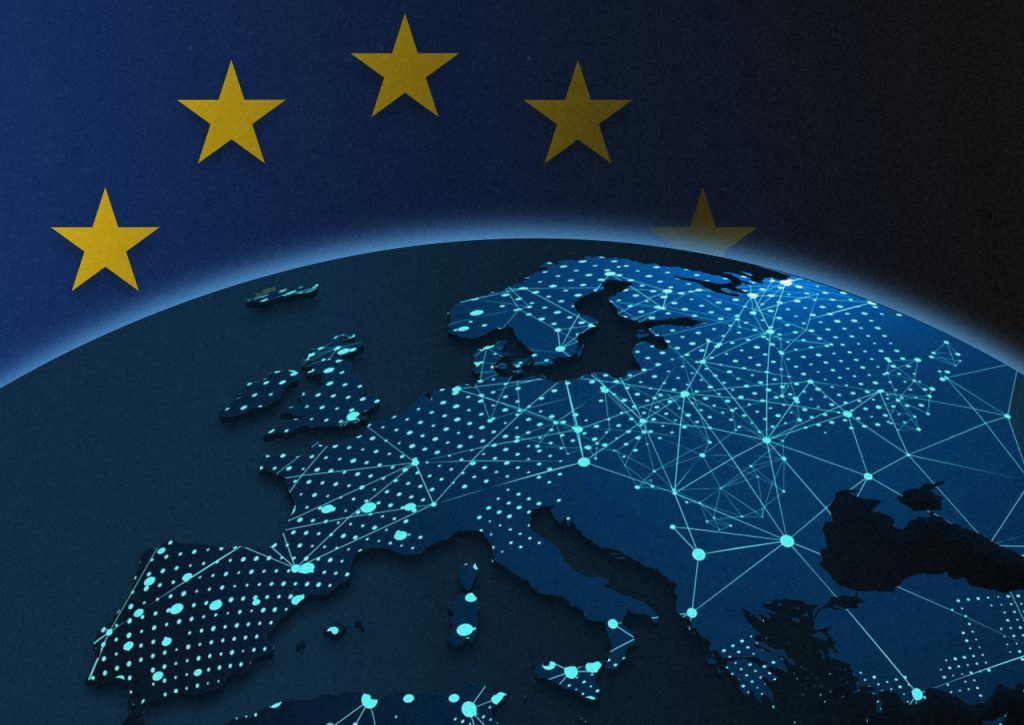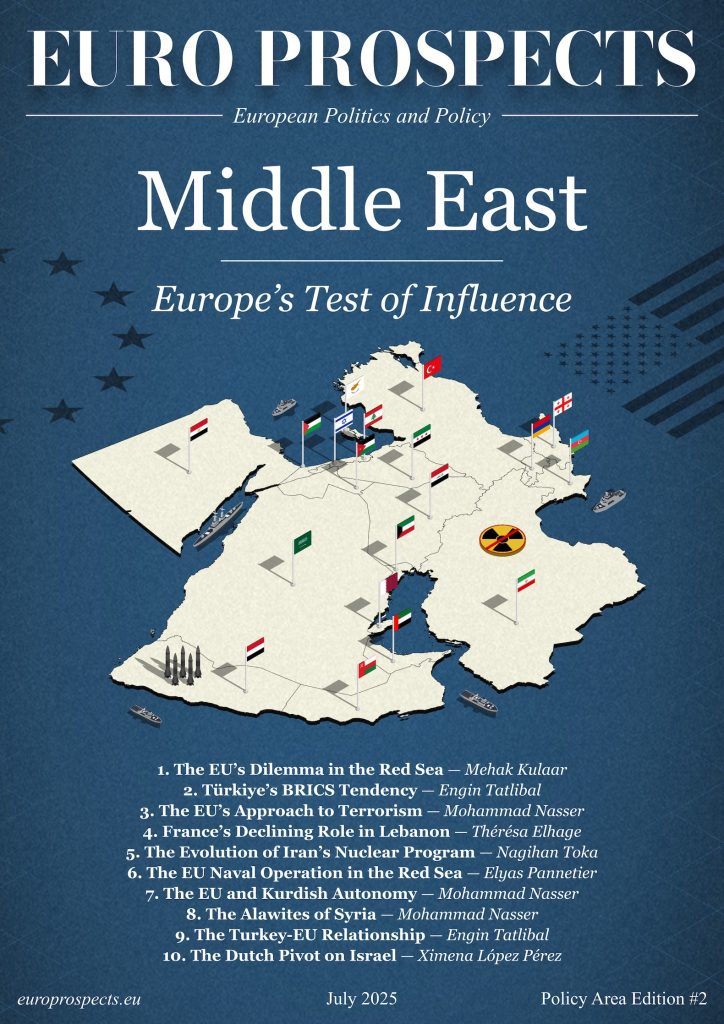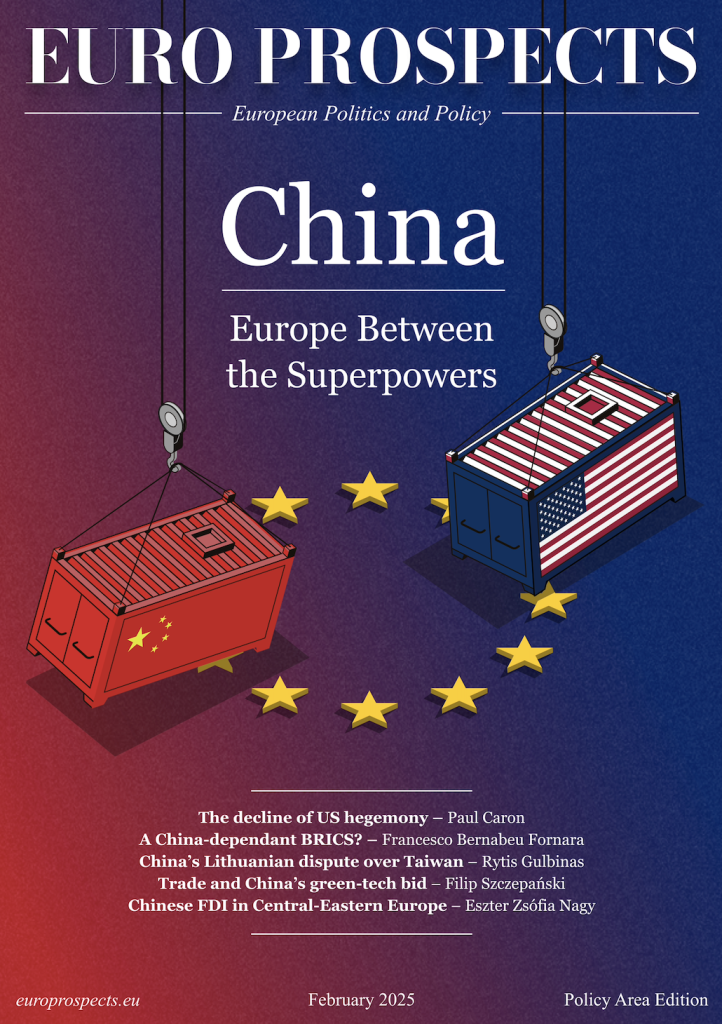10 min read — Analysis | EU | Policy | Geopolitics
The EU's Pursuit of Technology Sovereignty: Can It Lead or Follow?

By Serena González Fernández — EU Law Correspondent
Edited/reviewed by: Sam Volkers
October 23, 2024 | 12:00
Beyond Competitiveness
In the words of Josep Borrell, the EU’s high representative for foreign affairs and security policy and vice-president of the European Commission, “we are in a situation where economic interdependence is becoming politically very conflictual.” What was once a pathway to global cooperation is now a source of vulnerability.
Nowhere is this more evident than in the race for technological sovereignty, a concept that speaks to a nation’s ability to control and govern its own technological infrastructure independently from unwanted foreign influence. For the EU, this pursuit is not a matter of choice but of survival.
Its overreliance on non-EU technologies, from semiconductors and AI to energy grids, threatens more than just competitiveness; it jeopardizes security, autonomy, and overall geopolitical standing. In an age where technologies are not just tools but weapons of global influence, Europe risks becoming a casualty in this new era of digital imperialism. The US-China tech race, the COVID-19 disruption of
global supply chains, and the war in Ukraine and Europe’s energy dependence on Russia have made it impossible to ignore these vulnerabilities.
This race is not simply about economic competitiveness. It is about asserting strategic autonomy and ensuring that Europe positions itself as the leading architect of the future global order, protecting its values and interests. As Ursual von der Leyen, president of the EU Commission, warned in her last political guidelines, “Europe cannot afford to fall behind and lose its competitive edge in this race, nor can it leave any strategic vulnerabilities exposed.”
However, while the need for innovation is clear, the EU’s ability to foster it is being undermined by its own regulatory apparatus and underinvestment. Startups, innovators, and industrial players are caught between the need to innovate and the growing regulatory, political, and economic barriers to doing so.
As French President Emmanuel Macron put it, Europe is “overregulating and underinvesting,” creating obstacles for the very innovation it desperately needs.
And let’s not forget that the so-called “Brussels effect” – Europe’s ability to shape global standards through its regulatory power – hinges on more than its regulatory might and quality standards. Great part of this power thrives on its role as one of the world’s largest importers of technology and services, compelling foreign companies to follow suit because they simply cannot afford to ignore the massive European market. A more autonomous Europe might safeguard sovereignty but at the cost of diminishing its global impact.
The question now is how to strike a delicate balance between advancing its autonomy and reducing dependencies, all while maintaining strong international partnerships and leveraging its normative power. The newly appointed Commission’s strategy reflects ambition, but is it enough?
The EU’s Position in the Global Tech Race
The Challenge —The EU’s dependency and underinvestment for critical technologies, especially in areas such as semiconductors and AI, undercuts its aspiration for technological sovereignty.
Currently, Europe produces less than 10% of the world’s semiconductors, leaving it heavily dependent on imports from the U.S. and China. This dependence not only exposes Europe to supply chain disruptions but also weakens its ability to innovate independently in future-critical industries.
Worse yet, the investment gap is staggering. The US is set to invest nearly 100 billion USD (€91.4bn), compared to Europe’s mere $2 billion (€1.8bn). China, too, is rapidly scaling its AI and autonomous mobility sectors, intensifying the competitive pressure on the EU.
This forces many European startups to relocate, particularly to the US, where nearly 30% of these Europe-founded companies, which later achieved billion-dollar valuations, between 2008 and 2021 shifted their headquarters.
Moreover, regulatory fragmentation across its Member States only adds to the complexity. Different national rules and priorities create inefficiencies, making it harder and more expensive for companies to grow, which slows down innovation. On top of that, Europe isn’t making the most of its large spending power. Its funds are spread too thin across various national and EU programs, often without giving priority to European companies.
Without unified policies and a massive increase in R&D funding, Europe’s dream of technological sovereignty will remain just that, a dream.
The Opportunity — Despite its challenges, the EU is not entirely outgunned. While other regions may outpace Europe in raw technological capabilities, the EU’s strength lies in its ability to set the rulebook.
Even as the EU’s share of the global economy shrinks, with one of the world’s largest integrated markets, the Brussels Effect continues to allow the EU to export its standards in critical areas like data protection, green innovation, and AI governance across borders. For many firms, Europe’s market is too important to ignore, with companies opting to align with EU regulations rather than risk market exclusion or developing costly separate processes. Foreign governments are also increasingly turning to model their own digital laws after the EU’s high quality standards.
What Does This Mean for the EU? — Being a regulatory superpower can only take the EU so far. The Brussels Effect risks becoming irrelevant if Europe’s innovation and economic dynamism continue to lag.
If Europe fails to bridge its technology gap and foster a thriving innovation ecosystem, its market could lose appeal, weakening its ability to set global rules. The EU must address its fragmentation, boost investment in critical technologies, and create an environment that incentivizes innovation. Otherwise, it risks ceding both economic and regulatory power to its faster-moving competitors.
The EU’s Digital Strategy
Under the previous Commission, the EU set out an ambitious goal to create “a Europe fit for the digital age.” The centrepiece of this vision is the Digital Decade initiative, outlined through the Digital Compass. This program targets four critical areas to be achieved by 2030: digital skills, infrastructure, digital transformation of businesses, and the digitalization of public services
Although visionary, its execution has been insufficient. Only 55.6% of Europeans possess basic digital skills, far from the 80% target. Similarly, 5G networks still cover just 50% of the EU’s territory, well below the required capacity to deliver advanced services. Worse still, only 17% of European businesses have adopted AI, despite the goal being 75% by 2030.
This underperformance highlights Europe’s failure to match its digital ambitions with sufficient investment. The Digital Compass estimates a €125 billion annual investment is required to bridge the gap with global competitors like the U.S. and China. Yet, the EU’s current trajectory suggests it is falling short of this mark.
Nevertheless, while the EU might struggle domestically, it has managed to advance significant strategies aiming to leverage its global influence across three critical areas of action:
Multilateral Initiatives — Through forums like the United Nations, OECD, and G7, the EU has been actively shaping global tech policy, promoting a “human-centered” digital transformation. The Global Digital Compact, the US-EU Joint AI Roadmap, and the EU-China Action Plan on online safety are part of this strategy.
Digital Diplomacy — With initiatives like the Global Gateway, the EU has aimed to build secure and reliable digital infrastructure in developing regions, enhancing its leadership role. Emphasizing a “Team Europe” approach in its digital diplomacy has also sought to help pursue a more coordinated digital strategy abroad.
Regulatory Activism — Lastly, its normative power has been its sharpest tool. Through landmark regulations like the GDPR, the EU has shown it can export its rules, co-opting global compliance with its standards. Now, with more recent laws like the Digital Markets Act, Digital Services Act, Chips Act, Data Governance Act, Cybersecurity Act, and the upcoming Cyber Resilience Act, the EU aims to assert its authority over other critical digital infrastructures.
Despite these efforts, we must not overlook a fundamental truth, regulation without competitiveness is a hollow shield. As Mario Draghi, former Central Bank President, highlighted in his 2024 report on European competitiveness, regulation alone will not save Europe if it continues to underinvest and stifle innovation. Europe’s tech sector remains burdened by regulatory fragmentation and underfunding, preventing it from reaching its full potential. Draghi’s call was clear: reform Europe’s regulatory stance and complete the Digital Single Market. Anything less risks leaving Europe behind, watching the US and China solidify their dominance.
The New Strategic Focus of the European Commission
The new Commission’s lineup reflects a clear shift in direction. After a somewhat unclear first term, Von der Leyen has greater control and her agenda and will prioritize initiatives to ensure that Europe is a rule-maker, not a rule-taker, in global digital affairs. As she stated in her 2024-2029 Political Guidelines, Europe must not allow itself to be weakened by external dependencies and must work “bold in ambition and sovereign in action.”
At the core of this vision is the full realization of the Single Digital Market, facilitating seamless digital trade and innovation across the Union. Initiatives will include ramping up AI investment, driving forward the European Data Union Strategy, and fostering open data systems, all while maintaining the EU’s strict standards on data privacy and security.
To break free from technological dependencies, the Commission plans to launch targeted initiatives aimed at boosting strategic investments in critical sectors like semiconductor production, quantum technology, and AI. The European Competitiveness Fund will play a central role, acting as a financial weapon to reduce Europe’s reliance on foreign suppliers for essential digital infrastructure.
The plan further involves a comprehensive approach to digital diplomacy, ensuring that the EU’s voice is strong in international digital policy discussions. This includes not only protecting the EU’s strategic interests but also promoting its regulatory frameworks as global standards. Moreover, the Commission announced its intention to work closely with partners to address common challenges, such as cybersecurity and data governance, and to counter external threats to its technological sovereignty.
A Delicate Balancing Act
As the global tech race intensifies, Europe faces the difficult task of reducing its dependence on non-EU technologies without losing the advantages of international cooperation. Achieving this balance requires more than just ramping up production; it demands a new vision of openness that safeguards Europe’s strategic autonomy while maintaining collaborative ties with global partners.
The pursuit of “open strategic autonomy” must allow Europe to act independently when needed, but also remain open to the benefits of shared expertise and innovation. The challenge is to rethink what openness means in a world where geopolitical risks are increasingly tied to technological dependencies. Prioritizing measures that “de-risk” Europe’s reliance on non-EU technologies will be key to protecting its autonomy.
Yet the core question persists: Can the EU strike the right balance between its regulatory power and the need to foster innovation at home? While Europe’s regulatory leadership is a strength,
overregulation and fragmentation have long hindered Europe’s ability to compete on a global scale.In its next term, the Commission’s challenge is to complement its regulatory framework with a renewed focus on investment in critical sectors, incentivizing innovation while securing its technological sovereignty.
While the ambition is there, real questions remain: Will Europe’s bold initiatives be enough to overcome its dependency on foreign technology? Or will regulatory hurdles and insufficient funding continue to stifle the innovation it so desperately needs? Only time will tell whether this strategy leads to sovereignty, or simply more stagnation.
Write and publish your own article on Euro Prospects
Subscribe to our newsletter – stay informed when we publish articles on pressing European affairs.

